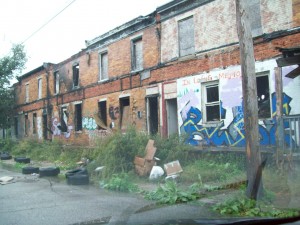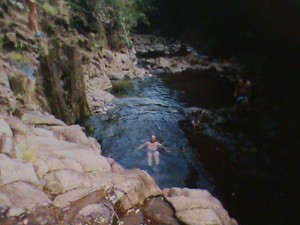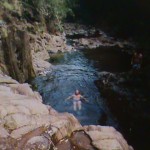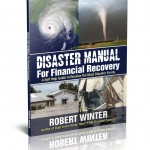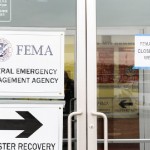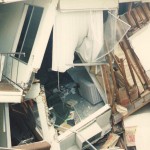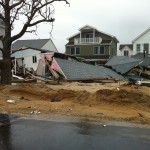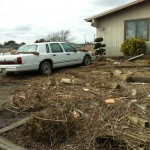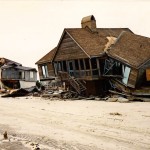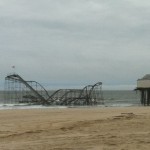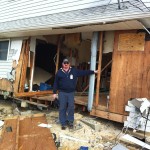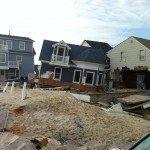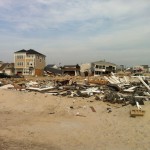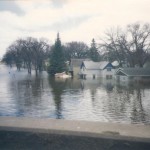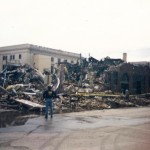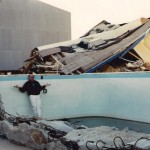Tag Archives: #RobertWinter
Is FEMA Ready for the Next Katrina?
NewsIs FEMA Ready for the Next Katrina?
Everyone remembers the disaster of Hurricane Katrina and all of the deaths and issues that followed. While it’s impossible to stop hurricanes and other natural disasters, it is possible to improve the way that the government responds to and handles them. Without a doubt, they handled #HurricaneKatrina poorly. The country and FEMA vowed that they would not let something like that happen again by putting in place a better infrastructure and better logistics to ensure that it doesn’t. They started to develop a new and better system in hopes to improve their response time and start getting help to victims as quickly as they can.
FEMA Still Floundering
The new system was supposed to take care of issues they faced a decade ago. They’ve had 10 years to work on the problem with other disasters to test them along the way. Yet, they admit that the new system is still undergoing work. There’s the chance that the new system might not work as well as hoped.
Thus far, they’ve spent close to $250 million on revamping the plan, trying to make sure they have enough supplies and a fast enough system of getting help to people to reduce the effects if a disaster-sized Katrina occurred again. Now it’s said they’re not certain their plan will be effective. This comes directly from the Department of Homeland Security’s inspector general.
FEMA, part of the Department of Homeland Security, was the center of controversy after Katrina. They couldn’t handle the amount of help required of them for residents in Alabama, Louisiana and Mississippi. Their new system was supposed to automate and make the distribution of relief easier. The hope is that they will be able to deliver emergency supplies faster, which can help to save lives and make survivors’ lives a little easier.
The system tracks more than just supplies that are coming from FEMA though. The system will track those from other agencies as well as state, local, and even tribal governments. It can even track supplies from nongovernment organizations and those that come from the private sector. Ideally, this would give them an idea of what they had and where it was going at all times. In theory, it would make handling larger disasters easier.
Here’s the rub though. The officials from FEMA said that the system was up and in place, and even running smoothly in January of 2013. The auditors who looked into this did not find that. In fact, they saw that the system was close to 19 months behind schedule – more than a year and a half!
It doesn’t do anything that they claimed. Namely, it isn’t able to work with the logistics management system of those aforementioned partners, so they have no real-time information about supplies nor where they might be.
The system is still not up and running. This means if another disaster the size of Katrina happened, or even a smaller one, they will not be able to handle it. Chances are they’ll need more money in order to complete the project.
You Might Be on Your Own
When you’re facing a disaster, there’s a chance you’ll be on your own for a while. Help from the government might be some time in coming, and maybe it just won’t come at all. You need to be ready to fend for yourself and your family. After Hurricane Iniki, many people in Kauai swore they’d never live like that again after a disaster, so they built bomb shelters with weeks of supplies and generators.
Resouce: http://www.washingtonexaminer.com/ig-says-fema-cant-be-sure-new-logistics-system-will-work-in-next-katrina/article/2555000
What Happens When States Can’t Afford to Call in FEMA?
Disaster Tips In a true disaster, the governor of the state in which the disaster occurs will need to request federal help, and the President will need to declare a major disaster in the state and the county. This is the only way that residents of the area will be able to have any sort of disaster relief that comes from FEMA, even though they may have a number of local, county, and even state options for help right after the disaster takes place.
In a true disaster, the governor of the state in which the disaster occurs will need to request federal help, and the President will need to declare a major disaster in the state and the county. This is the only way that residents of the area will be able to have any sort of disaster relief that comes from FEMA, even though they may have a number of local, county, and even state options for help right after the disaster takes place.
What Is a Disaster According to the Government?
It is important to remember that what you and your neighbors might consider a disaster might not meet the federal requirements for being an actual disaster. For the government to allow federal assistance from FEMA, the disaster must be serious and affect a large number of people. Some of the most recent examples of declared disasters include #HurricaneKatrina and Hurricane Sandy. Typically, a disaster, according to the government, happens when hundreds of homes are destroyed or damaged at the same time and a large number of people are displaced from their houses and apartments.
If your area or county can’t meet the requirements of the federal government when it comes to a disaster, then you simply won’t receive help from FEMA.
How Do You Prepare for a Disaster That FEMA Can’t Help?
Sometimes, you will be on your own, even though you and your neighbors might feel that you are living in a disaster area. Instead of waiting for something like this to happen and being at a loss, you should take steps to prepare. One of the best things to do is get high quality insurance for your property. Homeowners insurance is important, as is renters insurance for those who don’t own.
However, look at the fine print of what these policies will and will not cover. Make sure they are able to cover a range of different disasters and that they do not have loopholes for “Acts of God” and the like. Make sure it covers things such as flood, quake damage, wildfires, etc. Insurance isn’t the best answer; it’s the only answer if there is no government assistance.
Look at Local Programs for Some Help
When you don’t have anywhere else to turn after your home is gone and it looks as though FEMA help won’t be coming through, you can turn to local programs. Many times local charities and churches will set up temporary shelters and be able to provide clothing, food and a warm place to stay for those who need it. These can be real lifesavers. Celebrities4DisasterRelief.com is my new foundation to help disaster victims.
It might be a good idea to consider looking at some of the local programs set up in your neighborhood right now just to have a better idea of where to turn when you need help. You could also get to know your neighbors better, so you have a network of people in the area that can help one another when the chips are down. When the government is not there to help, we need to be able to be there for one another.
Keep in mind that sometimes help from the government just takes some time. It might be a few days or longer before they actually declare the area a disaster. If they do, then you will be eligible for help from FEMA. You can visit their site, call them, or talk with representatives who will likely be in the area about what you need to do to get assistance from them.
Hike Kauai with an Insider
Travel TipsIf you like to hike (I like to hike and camp and all sorts of outdoor stuff, which is a good thing when you’ve got to travel over mountains and through jungles to assess damage after a cyclone—ha!), Hawaii is an amazing place for it. You probably know that much already.
An insider’s secret that I like to share is to take the back roads to the end of the Wailua River. The Wailua River was the subject of my last blog post. There you’ll find hundreds of stone mounds (known as cairns) left by early Hawaiians. You also find heiau—ancient structures—in this area.
But the best-kept secret is the hike that you find past the end of the Wailua River trail. You take this trail and it brings you inside of the crater formed by the volcano that made the island. This is where the river actually begins, formed by the water seeping from the ground and the walls of the crater.
As it sits at the bottom of the mountain, beneath the famous Wall of Tears (which is where some of the waterfalls are found), it is obviously a good source of water and is a trail that you have to try if you like nature and are interested in the ways that fresh water operates in this environment. #Hikekauai just for fun!
My History with the Media
News The BookWhen #HurricaneIniki hit in 1992 and I headed over as a CFI with #FEMA to Kauai for the major relief effort, I used the local #radio station, KONG radio, to establish myself there on the island. I called in to the show and secured myself a guide and a driver from the airport (cool!). Accommodations were less than stellar— we were jammed ten to a room and sleeping on cots in a hotel conference room (not cool)!
I guess KONG liked my radio voice, because I was invited to the radio station to deliver disaster relief news and advice, which I did gladly. I gave praise to the Red Cross and told listeners about MARS units of portable phone banks that the military would make available.
I talked abo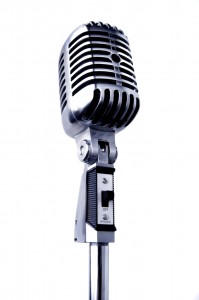 ut some of the things the National Guard’s men could do to help. I informed people that they didn’t have to just sit and wait for help. We had Disaster Assistance Centers that could give them all of the basics—food, water, sleeping bags, lights, MREs and a hot meal at the center. I reminded people about the dangers of candles and the danger of ingesting contaminated tap water.
ut some of the things the National Guard’s men could do to help. I informed people that they didn’t have to just sit and wait for help. We had Disaster Assistance Centers that could give them all of the basics—food, water, sleeping bags, lights, MREs and a hot meal at the center. I reminded people about the dangers of candles and the danger of ingesting contaminated tap water.
I consistently used the broadcasts to help the islanders be safe, get support and to get their inspections done. But it was hard for us inspectors to live like sardines, and we were growing more and more fatigued.
The radio broadcasts brought attention from other media outlets, and when I ended up on CNN, I used my airtime to tell the media they were hogging all of the available accommodations and not contributing to the relief effort (You can read more about this in my book).
FEMA heard about this broadcast and told me to stop being a part of any broadcast. They said I had no business giving out information. FEMA wanted to control everything that had their name associated with it, and directly attacking the media was not something they would endorse.
Well, now I’m back on the air, taking a chance and delivering the disaster preparedness message to an audience of over 10 million so far. And telling my stories.
If you haven’t heard my show in your market, you can listen to one of my interviews here, and get a copy of my book. I now have another book out, Disaster Manual for Financial Recovery which includes what you need in case of a disaster to get the most financial assistance from the government. Buy it here for your ebook reader or in paperback.
Have you visited me on Facebook? I’ve got my radio and personal appearances listed there, and there are a bunch coming up. Come say Hi!
